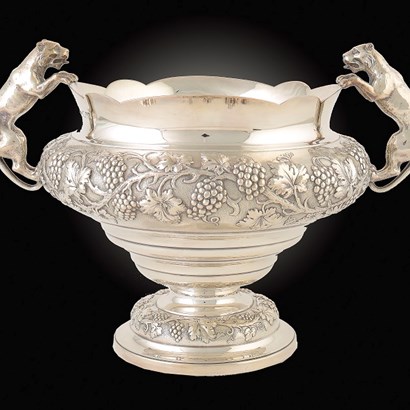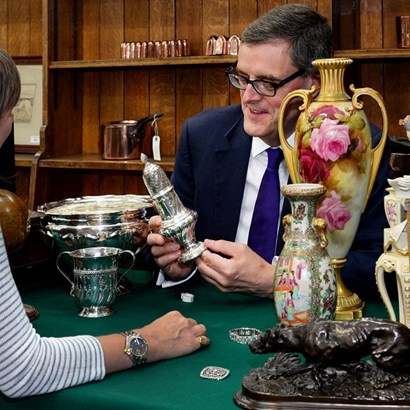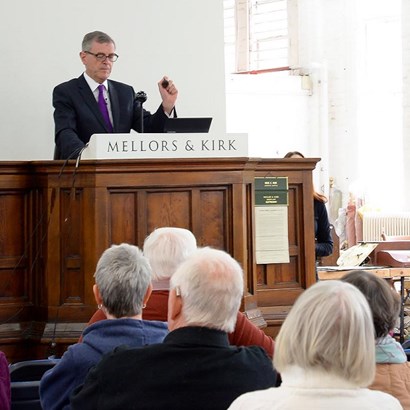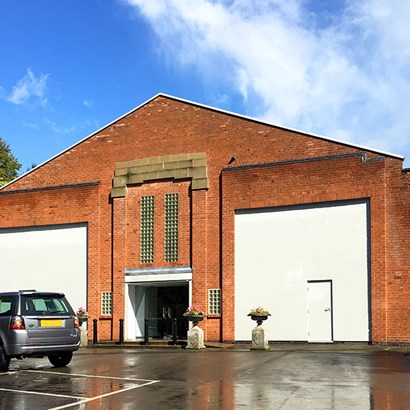Auction Insights
Jewellery at Auction
Diamonds are never out of fashion but when it comes to high end jewellery second hand is not second best. In Nottingham, you can find the best of both.
Jewellery is intrinsically valuable but have you ever wondered just why it is so expensive? At least part of the answer is due to the fact that it is almost always an illogical purchase. Whether it is an engagement ring or an eternity ring, the choice is bound up in emotion. Several of the larger regional specialist auctioneers, including Mellors & Kirk have identified an increase both the quality and quantity of antique, collectable and second hand jewellery that is being consigned to auction, matched by a similar growth in individuals who now choose to purchase it directly at auction, increasingly bidding online from this country and abroad.
From superb Victorian ‘over the top’ creations, the stunning jewels of the Belle Epoque of the days of King Edward VII and Lily Langtry, to beautiful Arts & Crafts jewellery made for important retailers such as Liberty & Co, the choice is endless. The understated elegance of an Art Deco ring or the quite different designs that were popular in the years after World War II, which led directly to some of the more innovative work of the designer-jewellers such as Andrew Grima of the 60s and 70s, present yet more choices
The quality of the rubies, sapphires, emeralds and other stones and also the workmanship is almost guaranteed to be better than modern equivalents. Nor should it be assumed that commissioning a special new piece from a jeweller who offers bespoke work will be much better. Brilliant craftsmen and women are few and far between in this as in most other traditional crafts. I know of only a handful in the East Midlands, several of whom work in Nottingham, including a master par excellence of the particularly tricky technique of enamelling. Such creativity is also a positive sign for Nottingham, pointing as it does to the potential future retail environment that will not be dominated by chain stores.
Most of visitors who wish to find out what their jewellery is really worth at a valuation day already have an idea, or think they do, of its value from an insurance valuation. It usually comes as a shock when they are informed that such valuations are, almost always, so excessive as to be virtually meaningless. At best, the item will have been more or less adequately described, but the high price is a ‘fig leaf’ to justify the colossal mark up of retail jewellers both small and large.
Changing fashions and lifestyle mean that much jewellery that is twenty or thirty years old is shunned by the wearer, who usually focus instead on one stunning piece, instead of endless eighties ‘bling’.
As an example, one can be forgiven for thinking that brooches – such as the huge 1950s diamond brooch that we are to offer next month – are in danger of extinction. Is it only senior royals who wear them these days?
Anyone who comes into possession of such heirlooms really should take professional advice. Most reputable auctioneers who have access to specialists will provide this without obligation if the owner is considering putting it up for auction. The problem with many jewellers is that they are conflicted - the difference between buying cheap and selling dear is too wide to bridge. Venturing online for a valuation is, of course, unreliable.
It is no surprise to hear that whilst a jeweller has refused to make an offer (often the excuse being ‘we are overstocked’) they will buy any amount of gold articles for the ‘scrap price’, but how can you be sure the price is fair? Before parting with your gold, even if the item is damaged, please do a little homework. If there is no hallmark perhaps because the object was bought overseas it may have instead a mark that will indicate its fineness, examples of this are 375 stands for 9ct gold, 750 for 18ct and 950 in the case of platinum. You should expect to get at least 98% of the day’s Spot Price, or 100% in the case of coins such as gold sovereigns.
At the Auction House we have just produced the first specialist auction devoted to jewellery and silver. There is bound to be much interest in one of the most magnificent diamond rings I’ve handled, a huge 7caret solitaire, which is realistically estimated £30,000-40,000. The ring has an interesting history. It was bought for the owner’s late mother at a Retford auction of Henry Spencer & Sons, in their day one of the foremost regional auctioneers. In 1966 the £3000 hammer price it made would have bought a three bedroomed detached house. If 7cts are just too big for your finger what about a Belle Epoque diamond necklace that doubles up as a tiara (estimate £20,000-25,000)? Do not be disheartened by these high prices as a huge amount of more affordable, but often collectable Victorian sentimental jewellery, Georgian mourning rings and ‘Regard’ rings are up for sale. These are all examples of antique jewellery that can be seen works of art which is why they have become so collectable.
My top tips if you are tempted is to bid only for what appeals to you, decide on and stick to a limit and do not be disappointed if you are unsuccessful because there is always another sale. Good luck!
< Back to Auction Insights



